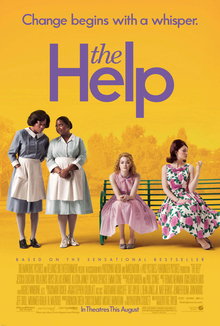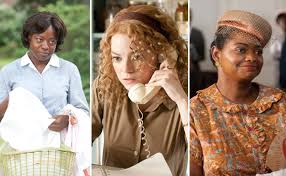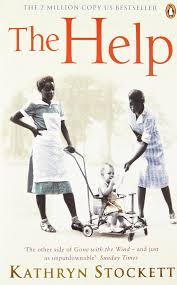Swapna Narayanan
Earlier in January this year, during the Golden Globe Awards, about 300 Hollywood actresses pledged to wear black for the award ceremony. They coordinated this effort to counter sexual harassment across industries and aptly named it #TimesUp!

And when I watched the show live on TV, the entire effect of these women in black was simply awesome. The invincible power of united women, the power of togetherness, the power of sisterhood, the power that can rock the world! And of course, how can one forget the powerful speech made by the ever-inspiring Meryl Streep!
 Around the same time, I also read an amazing book – The Help – by Kathryn Stockett. While the book largely highlighted the prevalent social conditions of the early 60’s and gave a glimpse into the segregated life in Mississippi and went on to become a major movie garnering many awards – Oscars, Golden Globe etc., to me it appealed as a classic example of sisterhood.
Around the same time, I also read an amazing book – The Help – by Kathryn Stockett. While the book largely highlighted the prevalent social conditions of the early 60’s and gave a glimpse into the segregated life in Mississippi and went on to become a major movie garnering many awards – Oscars, Golden Globe etc., to me it appealed as a classic example of sisterhood.
The book revolves around the help provided by the community of blacks to the upper-class white families of Jackson, Mississippi. These black women worked as a help in the white households and spent their day feeding, dressing and playing with their children, while their own children were left alone at home. Further, the children they tended to, eventually grew up and aligned with the discriminatory thinking of their parents and the entire white community, much to the angst of these helping women.
The story revolves around three main characters, Miss Skeeter – a young white woman who has just come back home after her college and wants to be a journalist, Aibleen – a black maid who is raising her seventeenth kid and Minnie – another black maid who always ends up losing her job because she speaks her mind!
Now while the book beautifully touches upon the subtler nuances of the relationship with the whites and blacks in that community, what stayed with me was how these three disparate women got together and brought in a wave of change – for themselves and for their communities (both white and black).
The trigger to this friendship begins with Miss Skeeter who, on coming back home after finishing college, finds that her favourite maid (who has raised her since childhood) Constantine is not with them anymore. On questioning her parents, she never gets any straight answers.
 Different from other girls her age who are all married by now, and with an urge to not toe the line of these girls, she takes up a job in a local magazine, but is not happy with it. And when she tries her hand at writing, a response from a publisher and her inherent respect for the maids in their community urges her to write a book on the lives of these maids. Conscious of choosing a highly controversial theme, she decides to go about the writing in a secretive manner.
Different from other girls her age who are all married by now, and with an urge to not toe the line of these girls, she takes up a job in a local magazine, but is not happy with it. And when she tries her hand at writing, a response from a publisher and her inherent respect for the maids in their community urges her to write a book on the lives of these maids. Conscious of choosing a highly controversial theme, she decides to go about the writing in a secretive manner.
The first maid that she approaches is Aibleen who, having recently lost her son in an accident, was a maid at the Leefolts and is taking care of the baby – Mae Mobley. The baby is neglected by her mother but Aibleen, with enough experience and a heart filled with love, only encourages and constantly boosts the self-esteem levels of the baby. Aibleen also writes and was appreciated as the smartest girl when she was at school. While her family commitments forced her to leave school, she never left writing. She chose to maintain a diary where she wrote her prayers at the end of the day, instead of reading them. Initially aghast and extremely hesitant, Aibleen eventually accepts Miss Skeeter’s request and starts sharing her stories with her.
Minnie Jackson, another maid and the best friend of Aibleen, is a character that is completely in contrast to Aibleen’s. An assertive super-woman with an extraordinary amount of energy, Minnie is well known for her cooking skills. Never to say ‘no’ to any amount of hard work, Minnie is an extremely strong woman who tolerates her abusive husband only to give a life of happiness to her five children, whom she dotes on. She is also extremely vulnerable with her open mouth and lands in trouble by often offending the white women and losing her job. Finally, she finds her home with the Foote family and actually helps the lady of the house find a grip on her life. Minnie also shares her stories with Miss Skeeter and eventually convinces some other maids to do the same.
 Along with a series of social and political happenings in the community, and late-night meetings between Miss Skeeter, Aibleen, Minnie, and the other maids, the manuscript eventually gets ready and published, titled as ‘The Help‘ with all the maids having pseudonyms.
Along with a series of social and political happenings in the community, and late-night meetings between Miss Skeeter, Aibleen, Minnie, and the other maids, the manuscript eventually gets ready and published, titled as ‘The Help‘ with all the maids having pseudonyms.
Needless to say, the book creates havoc, raises a storm, and impacts the lives of maids.
But it also ultimately brings in a significant wave of change in the community.
More importantly, it makes Aibleen and Minnie look at themselves as capable and confident women. Thanks to their united effort, each of them takes up some momentous and forward thinking decisions in their life – Miss Skeeter moves on to a better job in New York and arranges for Aibleen to take her position as the first black person to write a column in a local newspaper. Minnie leaves her husband and leads a happy life with her children working with the Foote family.
Isn’t that the true power of sisterhood – to enable, encourage and empower?


It?s hard to find knowledgeable people on this topic, but you sound like you know what you?re talking about! Thanks
LikeLike
Pretty! This was an extremely wonderful article. Thanks for providing this information.
LikeLike
Your style is really unique compared to other folks I have read stuff from. Thank you for posting when you’ve got the opportunity, Guess I will just book mark this site.
LikeLike